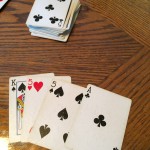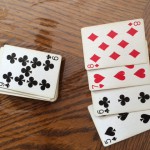
Spark your thinking!
1. Set up your social studies mini spark recording page: #21: The Floating City of Rotterdam
2. Watch this introduction video. Record each of the places shown on your recording sheet.
3. Read this article and answer 4 of the the questions with 3+ sentences. Remind your teacher that the answer key can be found in the social studies mini spark folder.
- What historical event led to the creation of the Delta Programme in the Netherlands? Explain the significance of this program in flood management.
- How does Rotterdam’s innovative architecture contribute to its ability to manage rainwater? Provide specific examples from the text.
- Explain how the Floating Farm operates. What technologies are used to support food production on the farm?
- What unique features do Wikkelboats offer to guests, and how do they reflect eco-friendly living?
- How does the design of the Floating Office Rotterdam (FOR) incorporate sustainability? List at least two design elements mentioned in the text.
- In what ways do the innovative projects in Rotterdam reflect the city’s response to climate change and flooding challenges?
- Based on the text, how do these unique architectural projects enhance the experience of residents and visitors in Rotterdam?
4. Go to this link to read an article about the floating park. Write 5-10 details about the park on your recording sheet. Include information about how this park is helping to save the environment.
5. Learn more about floating farms. Record 3-5 reasons you like this idea, 3-5 questions you have, and 3-5 things you don’t like about floating farms.
6. Share your social studies mini spark recording page with your teacher/EY coordinator.
 In this math mini spark you will explore the accomplishment of mathematicians that have shaped our math world.
In this math mini spark you will explore the accomplishment of mathematicians that have shaped our math world. An icosahedron is a polyhedron that has twenty triangular faces. A stellated icosahedron has each of those faces raised to a triangular pyramid. Wow! There’s a lot of big words in that sentence!
An icosahedron is a polyhedron that has twenty triangular faces. A stellated icosahedron has each of those faces raised to a triangular pyramid. Wow! There’s a lot of big words in that sentence! In the videos for this mini spark, Tony DeRose from Pixar talks about 3D animated characters and the math involved to make them look so smooth. It turns out there is a TON of math behind some of our favorite animated films, and it starts with some of the math learned in middle school!
In the videos for this mini spark, Tony DeRose from Pixar talks about 3D animated characters and the math involved to make them look so smooth. It turns out there is a TON of math behind some of our favorite animated films, and it starts with some of the math learned in middle school!
 Coordinate Geometry is one of my favorite areas of math. There’s just something about getting a sheet of ordered pairs and carefully plotting them on graph paper…connecting the dots to reveal a picture. If that’s your sort of thing too, check out Option 3 below. Happy plotting!
Coordinate Geometry is one of my favorite areas of math. There’s just something about getting a sheet of ordered pairs and carefully plotting them on graph paper…connecting the dots to reveal a picture. If that’s your sort of thing too, check out Option 3 below. Happy plotting! Multiplication. It is one of the four types of operations you learned in math (along with addition subtraction and division). There are many different ways to multiply numbers. However, sometimes, multiplying really big numbers can be a challenge. Luckily, there are many different techniques you can use to solve large multiplication problems.
Multiplication. It is one of the four types of operations you learned in math (along with addition subtraction and division). There are many different ways to multiply numbers. However, sometimes, multiplying really big numbers can be a challenge. Luckily, there are many different techniques you can use to solve large multiplication problems.




 Numberphile is a YouTube channel that posts many videos about many different math concepts. The channel has numerous videos on many real life examples. It is a great channel to learn about concepts not necessarily taught in school. One video that the channel contains is about a super egg, or a superellipse.
Numberphile is a YouTube channel that posts many videos about many different math concepts. The channel has numerous videos on many real life examples. It is a great channel to learn about concepts not necessarily taught in school. One video that the channel contains is about a super egg, or a superellipse.
